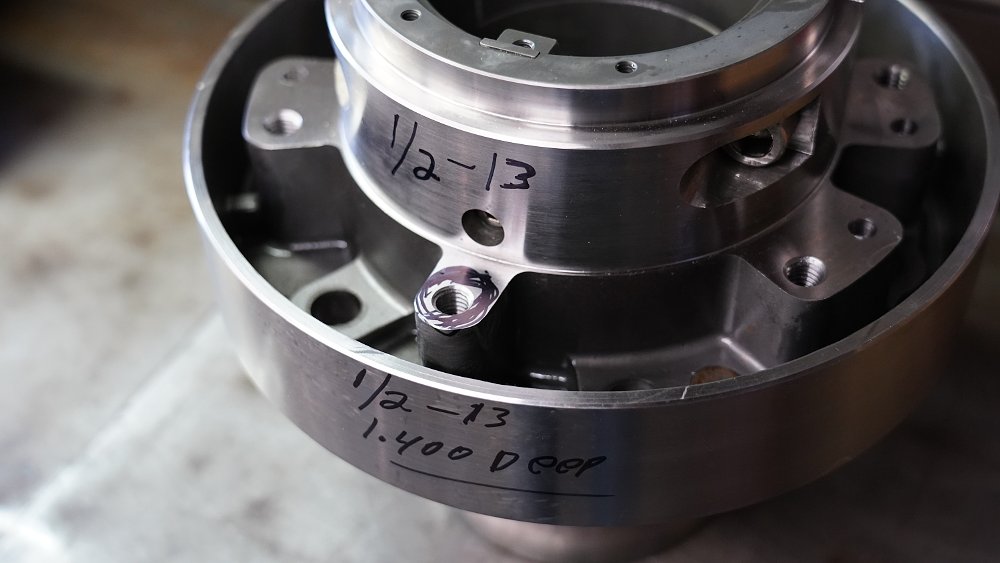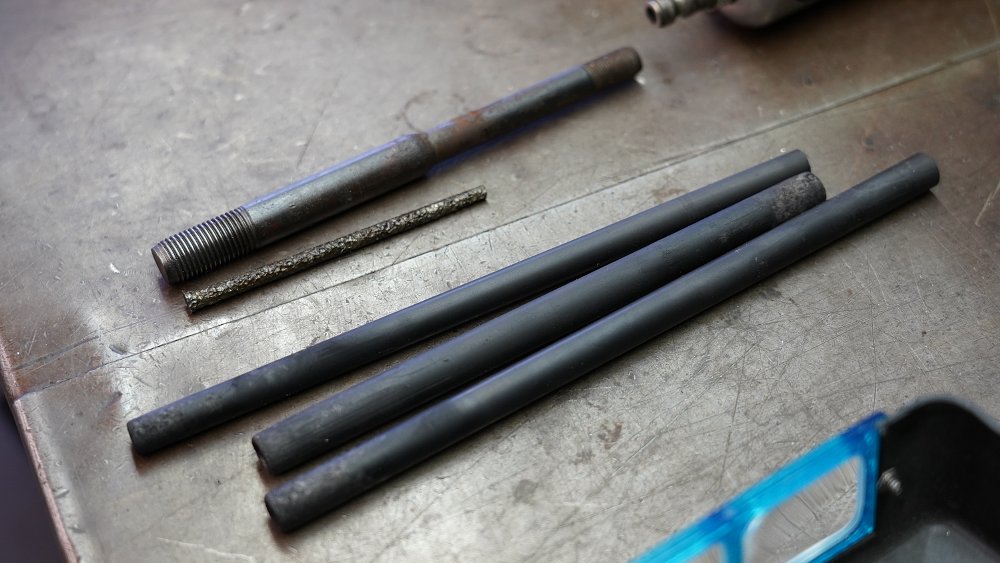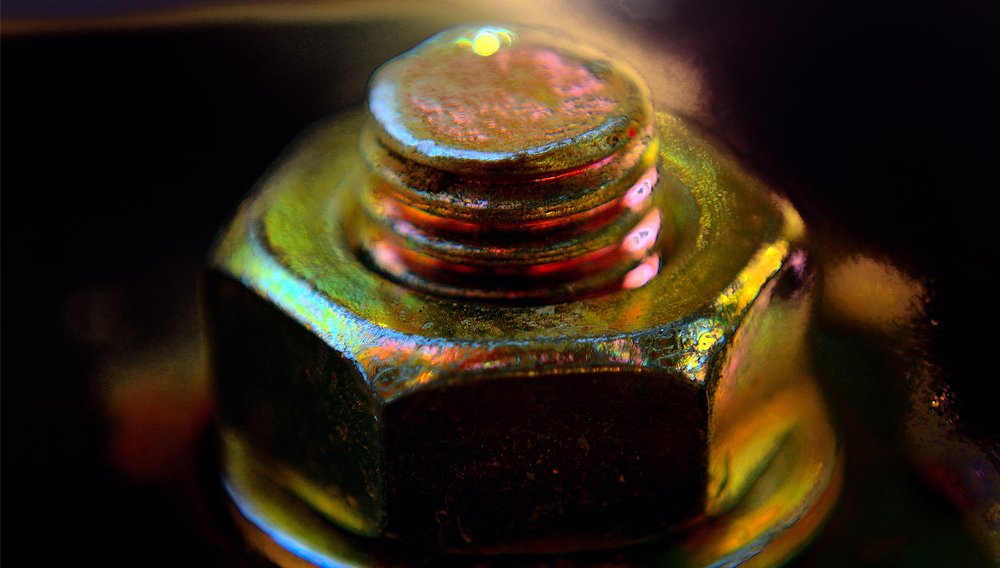By “everything else” Eric means broken taps and other hardened tools that won’t succumb to the cutting edge of a drill bit, and by “burn out,” he means disintegrate with an MDM machine, which looks like the offspring of a drill press and a MIG welder.
Metal disintegration machining, or MDM, uses intermittent electric arcs at the end of a vibrating electrode to break down metals into minute particles that are flushed away by dielectric fluid. “The vibration keeps the electrode from welding, and the interaction between the heat and cooling is what disintegrates the metal,” says Eric. MDM is a remarkable, rare, and surprisingly old technology that I knew nothing about until I’d exhausted DIY options for removing a broken stud from a 50-year-old cylinder.
In desperation, I reached out to a local machine shop for help, and was told to “call Jerry.” They were referring to Jerry’s Broken Drill and Tap Removal in Santa Ana, California, which was opened by Gerold “Jerry” Grafton in 1963 and is now run by Jerry’s grandson, Eric.
Jerry’s is just one of a handful of places in the United States that provide MDM services to the public, since the specialized and expensive disintegration machines are typically the domain of corporations. “Most of the facilities with my equipment are 75- to 100-man shops that manufacture and maintain things like nuclear reactors and ship engines,” says Henry Cammann, whose company built the MDM machines that Jerry bought in the 1960s and Eric still operates today.

Jerry’s certainly isn’t a giant of industry, but it served SoCal’s aerospace behemoths for decades and is still a lifesaver for many local companies and individuals across the country. There is no PB Blaster or EZ-Outs in sight at Jerry’s. Instead, Eric has three Cammanns (a large, small, and portable unit), a variety of pneumatic drills, and a dust-caked grinder that he uses to keep a fine edge on his bits.
“Drilling does the same thing as the machines, and I don’t have to pay for electrodes,” says Eric. Whether he’s using MDM or a twist bit, the objective is to hollow out the offending object to within a hair of its outer diameter, then remove the remaining material by carefully picking and chiseling it away with a pick that Eric fashions from a hardened drill blank.
Often, the original threads are left intact, though sometimes they need to be chased, or, in rare instances, replaced. “If I get a workpiece where somebody has already drilled it way off center,” explains Eric, “I may have to oversize the hole, turn a plug on the lathe, and then install and thread that.”
Drilling works for softer materials like the steel used in bolts and studs, but for Eric’s most common job — Harley heads with broken exhaust studs — burning is the method of choice since the studs are so long and the heads are so hard to get square.

“Setup is everything,” says Eric, who has both an extremely steady hand as well as a variety of jigs and guides to keep his drill on course. The Cammanns have a slotted bed for securing and truing the workpiece, and the tool head travels a set path, so the operation is very precise. Even though burning is more expensive “it’s a lot easier,” says Eric.
When it comes to broken drill bits and taps, burning is the only option, and the MDM equipment makes quick work of the material. Even with such specialized equipment, Eric says the jobs are often challenging. “I get stuff with multiple holes, multiple snapped EZ-Outs, and it’ll be melted from a torch, but those are the ones I enjoy most. That’s when I have to get creative, and the fix feels like art.”
For the end user, the cost is typically about $80 to $100 a hole. That’s not cheap, but if you’ve exhausted your options or your Plan B just snapped off in the project, MDM machining is a surefire way to make things right.



















